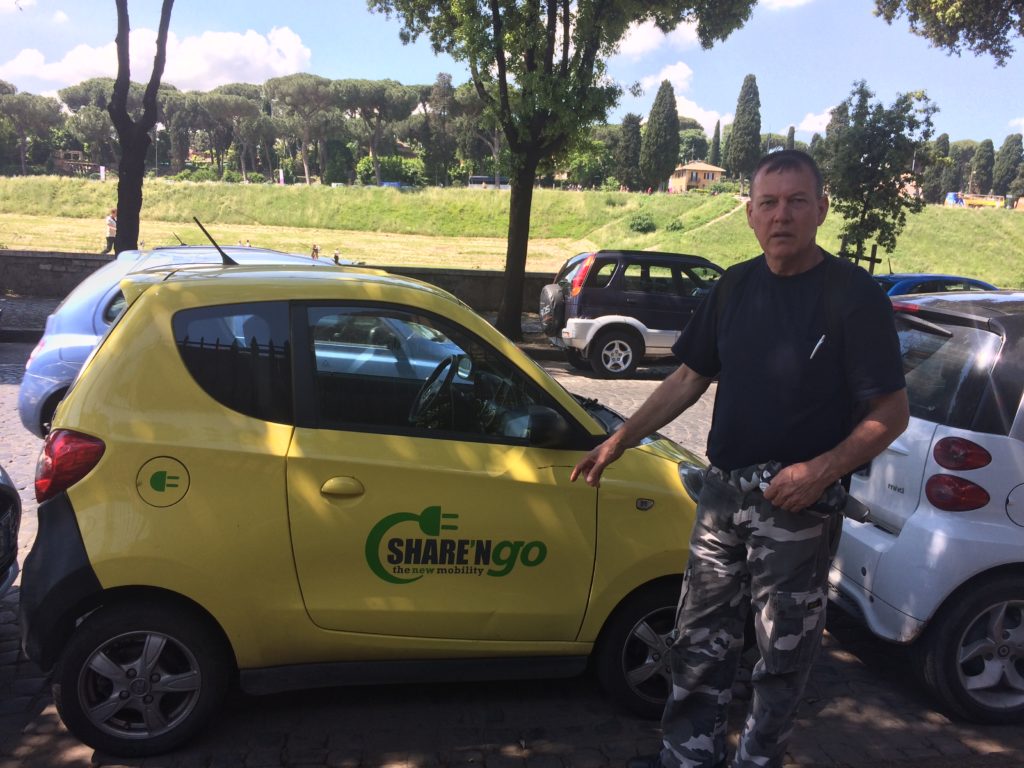 Electric Cars, … they are on their way back and there may be no stopping them this time.
Electric Cars, … they are on their way back and there may be no stopping them this time.
Just about every major manufacturer is either producing or will produce non-hybrid electric cars within the next five to 10 years. Hyundai has the Ioniq and the Kona, Nissan has the Leaf and Kia has its Niro.
These vehicles and other more expensive vehicles from Tesla and Jaguar are just some of the selection which are now available in Australia even with its small population.
China will produce around one million Neighbourhood Electric Vehicles (NEV) by the end of 2018 which is about a 25% increase on last year. These vehicles are very suitable for use within large cities and are cheap to buy and cheap to run but still have the capacity to deliver the service required of them without increasing the air pollution.
The attached photo was taken recently when I was in Rome. These vehicles are becoming more and more common. They are very easy to drive around a city and you can park them on a five cent piece and get four cents change.
You don’t need to compromise on size, space or performance if you don’t want to.
The Hyundai Ioniq, which is similar to the Toyota Prius, has an 88 kW electric motor and can travel almost 300 km. BMW proposes a model 3 with a range of around 500 km and it can get to 100 klm per hour in just over five seconds. The Nissan Leaf has a 110 kW motor but still has a traveling range of around 400 km.
If you need to carry some cargo the Mercedes-Benz eVito van sports an 84 kW motor and can travel up to 150 km before needing recharging.
Honda has its Urban EV and even the Mini Cooper will be produced with a 150 kW motor and has a travel range of around 250 km.
Can you imagine all of these vehicles on our roads transporting a population with zero emission? Why hasn’t this happen sooner? A documentary produced in 2006 entitled, “Who Killed the Electric Car”, may be worth the watch.
Moving up the scale, Volvo has the XC40 and VW will release its electric ID Concept, which may be named the Neo, in 2020 with a range of more than 400 km.
Porsche has its new Taycan, (pronounced tie-con) released in mid-2018 which is a 340 kW sports car, (that’s 462 horsepower, which makes more sense to guys my age) which can get to 100 km per hour in 4.6 seconds. Who wouldn’t want one of them?
The Tesla Roadster may cost twice as much but its is twice as quick at getting to 100 klm per hour in only two seconds and can wind out to just over 400 km per hour. It appears to be a perfect vehicle for people who want to get home quickly after doing their shopping.
Mercedes-Benz has its new EQ, electric vehicle launched in September 2018. They also have a number of good-looking sports cars and plan to have seven models that are purely electric to choose from by 2022.
All electric vehicles are certainly the way of the future. They are less expensive to produce, less
expensive to maintain and certainly less expensive to operate <<COMPLIMENTARY VIDEO>>>
The first advantage that I can see moving forward, is cleaner air, which legislators are pretending to address including legislating that manufacturers have DPF’s (diesel particular filters) on all diesel vehicles. These vehicles are plagued with problems to an extent that some manufacturers plan to cease making cars with diesel engines. The second advantage is the reclaiming of some individual sovereignty whereby a motorist is not disadvantaged by, let’s say, unscrupulous corporate entities.
The world is changing, … thank goodness.
John Lynn
www.suburbanoffgridliving.com

